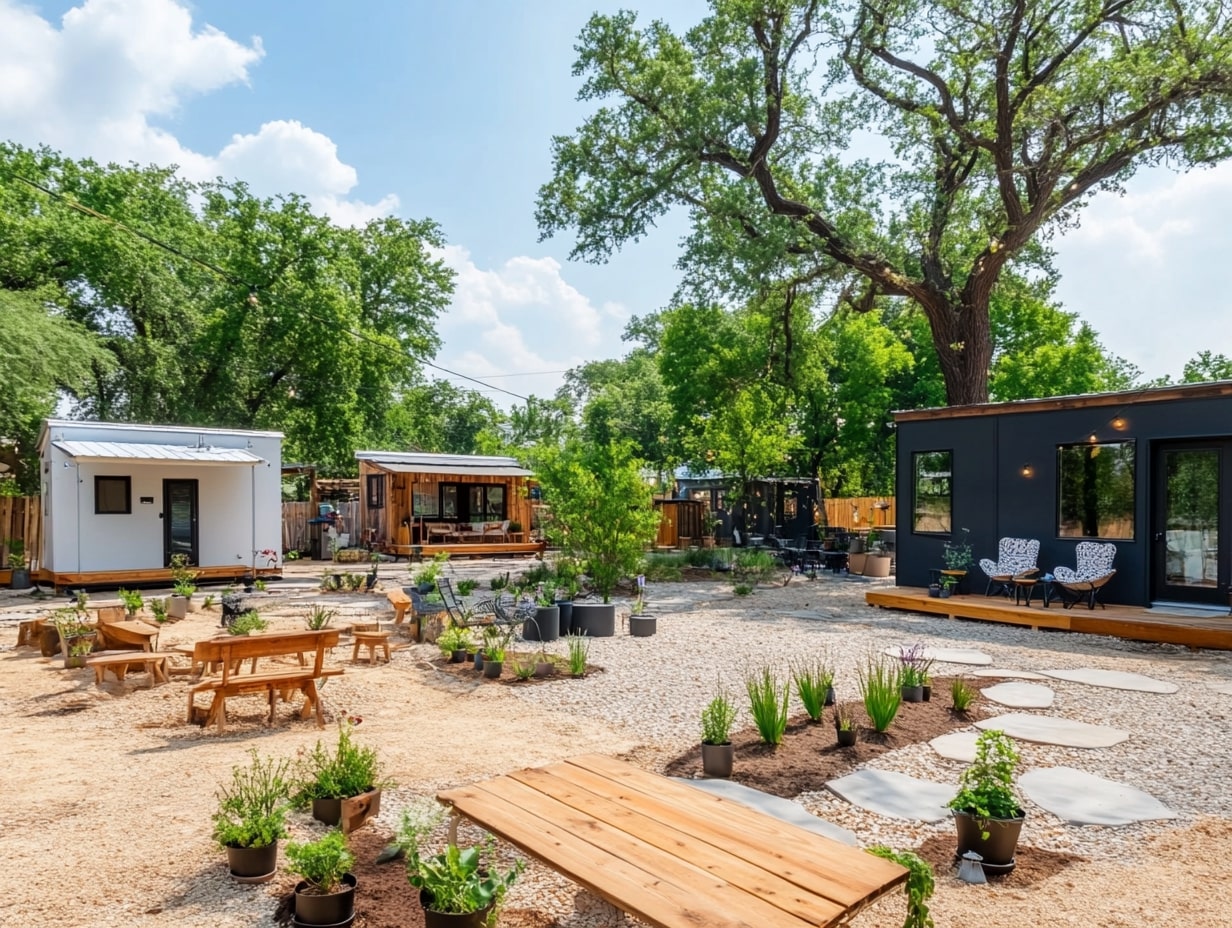
Tiny house living has captured our imagination, offering a simpler, more intentional way of life. But what happens when we take this minimalist lifestyle and place it in a community setting? Tiny house communities are popping up everywhere, bringing together like-minded individuals who value sustainability, affordability, and connection.
Living in a tiny house community isn't just about downsizing our space—it's about embracing a new way of living. From shared resources to collaborative spaces, these communities foster a sense of belonging that's hard to find in traditional neighborhoods. Whether we're looking for a stronger connection to nature or a more affordable housing option, tiny house communities offer unique opportunities and challenges worth exploring.
Understanding Tiny House Community Living
Tiny house communities bring like-minded individuals together to embrace minimalist living. These neighborhoods prioritize sustainability, affordability, and a strong sense of connection.

What Is A Tiny House Community?
A tiny house community consists of clustered small homes, typically under 400 square feet. These homes are often placed on shared land, with communal areas like gardens, kitchens, and recreational spaces. Residents share resources and responsibilities, creating an interconnected lifestyle. Communities can be urban, suburban, or rural, tailored to different needs and preferences.
- Affordability: Shared amenities and lower housing costs reduce financial burdens. For example, splitting land expenses and utility costs lightens the load for residents.
- Sustainability: Eco-friendly practices like shared solar panels, composting systems, and community gardens minimize environmental impact.
- Social Connection: Regular interaction in shared spaces fosters trust and builds meaningful relationships, unlike the isolation of traditional neighborhoods.
- Shared Resources: Access to communal tools, workshops, and carpool options enhances convenience while lowering individual expenses.
- Simplified Living: Living amidst others with similar values supports minimalism and prioritizes experiences over possessions.
Challenges To Expect In A Tiny House Community
Living in a tiny house community brings unique obstacles alongside its benefits. Recognizing these challenges can help us adapt and make the experience more rewarding.

Space Constraints And Privacy
Tiny homes inherently have limited square footage, often under 400 square feet. This restricts the personal space we can access, including storage and private areas. For example, maintaining personal items or hosting guests may become challenging. Additionally, close proximity to others within the community may limit opportunities for solitude. Establishing clear boundaries is essential to balance privacy with communal living.
Shared Resources And Responsibilities
Communal amenities like kitchens, gardens, or recreational spaces demand collective usage. Coordinating access to these resources can sometimes lead to scheduling conflicts or uneven usage. Shared responsibilities, such as maintaining communal spaces or adhering to sustainability practices like composting, require consistent collaboration. Effective communication ensures equitable management of shared areas and responsibilities.
Potential Conflicts And Resolution
Disagreements may arise from differing lifestyles, noise levels, or personal preferences. For instance, disputes over shared utilities like solar panels or waste management protocols could occur. Promoting an open dialogue within the community helps address these tensions. Implementing conflict resolution guidelines, such as periodic meetings or designated mediators, fosters harmonious relationships.

Building A Successful Tiny House Community Experience
Creating a positive experience in a tiny house community relies on intentional choices and active participation. Emphasizing shared values and personal contributions ensures a thriving and cohesive living environment.
Choosing The Right Community For You
Selecting the ideal tiny house community starts with assessing your priorities. Communities differ in focus, such as sustainability, affordability, or shared hobbies. For example, some prioritize eco-friendly initiatives like permaculture gardens, while others emphasize artistic collaboration or family-oriented environments. Visiting prospective communities and reviewing their guidelines can clarify how well they align with your lifestyle and long-term goals.
Proximity to daily needs, including work, healthcare, and shopping, should guide your decision. Communities in rural settings might offer tranquility, while urban locations can provide greater convenience. Balancing these factors ensures the selected community meets both personal and practical needs.
Developing Strong Communication Skills
Effective communication anchors relationships within tiny house communities. Regularly attending community meetings provides opportunities to voice concerns, share ideas, and build trust. Active listening, empathy, and expressing needs clearly support collaborative problem-solving.
Resolving conflicts promptly strengthens communal harmony. For instance, if disagreements arise over shared space usage, addressing issues constructively avoids escalation. Respect for diverse viewpoints builds a more inclusive community, enhancing mutual understanding and cooperation.
Contributing To The Community
Engaging actively in the community strengthens bonds and increases collective success. Volunteering for maintenance tasks, like gardening or organizing events, demonstrates commitment to the shared space. Consistent efforts in these areas reinforce the value of shared living.
Skill-sharing enhances the community's resources. For example, residents with expertise in carpentry can assist with small repairs, while others might teach sustainable practices like composting. Contributions tailored to individual strengths multiply the benefits of collaborative living and foster a resilient environment.

Is Tiny House Community Living Right For You?
Living in a tiny house community offers unique opportunities but comes with specific considerations. Understanding how this lifestyle aligns with your priorities helps determine if it's the right fit.
Assessing Your Lifestyle Needs
Evaluate your values and daily habits to determine compatibility with tiny house community living. People prioritizing minimalism, sustainability, and shared experiences often find fulfillment in these settings. For those craving a deeper connection to nature or seeking to downsize significantly, this lifestyle may align closely with their goals.
Consider practical needs like proximity to work, schools, or healthcare services if selecting a community. Shared spaces require navigating collaborative dynamics, making adaptability a key attribute. While some enjoy the camaraderie of communal living, others may struggle with reduced privacy or shared decision-making processes.
Balancing Pros and Cons
Weighing the benefits against potential challenges offers clarity. Tiny house community living promotes affordability, eco-friendly practices, and a strong sense of community. Shared amenities lower expenses, while interconnected living fosters collaboration and trust among residents.
However, limitations exist. Space constraints challenge storage and hosting capabilities. Shared spaces may introduce scheduling conflicts or demand compromises. Understanding these trade-offs ensures you're prepared to embrace communal solutions while managing personal sacrifices effectively.

Conclusion
Tiny house community living offers unique opportunities for connection, sustainability, and affordability while presenting challenges like reduced privacy and shared responsibilities. By focusing on open communication, aligning personal values with community priorities, and actively participating in collective activities, we can create a harmonious living environment. Balancing the benefits and limitations allows us to embrace a minimalist lifestyle that fosters meaningful relationships and environmental stewardship.


Comments (0)
Back to Architecture and Design Blog